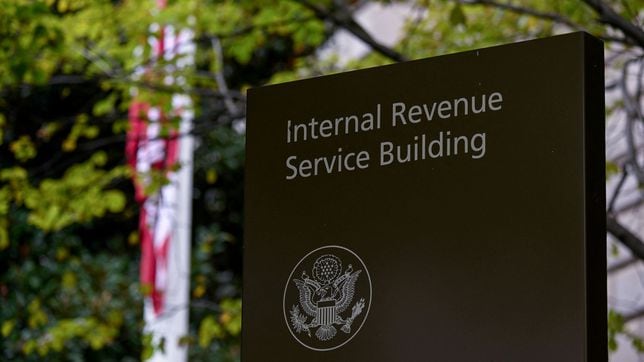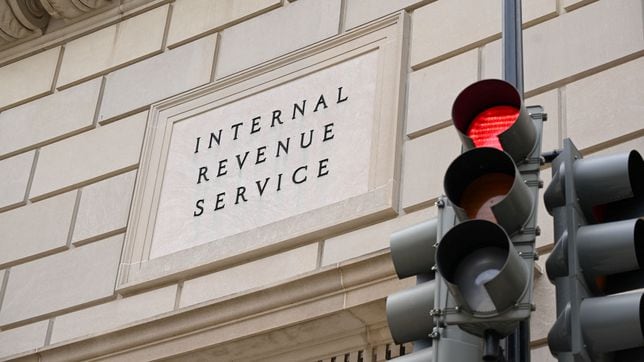Relief checks news summary | 1 April 2023
Latest information today on filing your IRS tax return ahead of the April deadline, and news on Social Security, inflation relief, interest rates, the housing market and more.


Show key events only
US Finance News: Latest Updates
Headlines | 1 April 2023
- Social Security and Medicare Trustees warn of respective funds depleted by 2033 and 2031
- Various states will continue to issueinflation relief checks and generous tax refunds in April
- Social Security April payment schedule: when can you expect your payment?
- No Supplemental Security Income checks will be sent in April;instead, the April payment was made on 31 March
- IRS offers a tax credit to filers with dependents in other countries
- Real GDP rose 2.6 percent in Q4 2022
- California passes a windfall tax on oil and gas companies to discourage price gouging
- Initial Unemployment Claims rose by 7,000 to 198,000 last week
- In February, the median price of homes sold in the United States was $438,200
Read more from AS USA:
You might be getting nervous with the tax return deadline coming in less than three weeks, but don't be so nervous that you fill it out wrong.
Here are some tips directly from the IRSto avoid making common mistakes when filling out your forms.
Mortgage rates could be at 5.4% by end of 2023
Rising mortgage rates coupled with sky-high home prices helped put the brakes on the housing market as many would-be homebuyers were pushed to the sidelines. After pushing toward the 7% level once again, mortgage interest rates have fallen for three straight weeks with the weekly average for a 30-year fixed-rate mortgage at 6.32%.
According to an updated prediction from the Mortgage Bankers Association mortgage rates will remain volatile in the coming months dependent on the Federal Reserve's interest rate policy. However, mortgage rates are forecast to drop to around 5.4% by the end of the year.
A city in California has launched a new guaranteed income program that would last one year, for eligible people who have been affected by the pandemic.
The City of El Monte launched its new Guaranteed Income Program which will provide cash assistance with no strings attached to 125 eligible residents.
Approved participants can receive a monthly payment of $500 for 12 months through a debit card that the city will issue.
AS USA's Rodrigo Serrano tells us about the requirements for those who want to apply for the assistance.
The value of the IRS’ solar panel tax credit has increased. To encourage the use of renewable energy, the United States will offer a reimbursement of up to 30% for households that install solar panels in the form of a tax credit.
The value of the Federal Residential Solar Energy Credit was raised through the passage of the Inflation Reduction Act from up to 26%, as had been offered in 2020 and 2021.
The tax credit, which can be claimed when one files their income tax return, discounts the cost of installing a solar panel by the taxpayer.
When considering eligibility, different details must be taken into account. Alejandro Martin explains what they are in this story.
Social Security and Medicare Trustees’ message to Congress
The Trustees recommend that lawmakers address the projected trust fund shortfalls in a timely way in order to phase in necessary changes gradually and give workers and beneficiaries time to adjust to them.
Implementing changes sooner rather than later would allow more generations to share in the needed revenue increases or reductions in scheduled benefits.
Cuts will need to be made to Social Security and Medicare within a decade
The Boards of Trustees of the Social Security and Medicare that oversee the funds that support the programs that millions of Americans rely on to either support their monthly income or provide their healthcare coverage issued their annual report on Friday. They gave a stark warning to lawmakers in Washington DC, that action needs to be taken to shore up the funds or they will be depleted within a decade.
While the date when the fund for Medicare will be exhausted was extended by three years from previous estimates, benefits will need to be cut starting in 2031 according to the latest report. The date when the fund for Social Security benefits will be depleted on the other hand was moved up by a year to 2033. At that time the Administration will only be able to pay out 77 percent of OASI scheduled benefits.
Home prices recorded a drop for the seventh-straight month in January, due to the rising level of interest rates putting the squeeze on the housing market. The S&P CoreLogic Case-Shiller US National Home Price Index slid 0.5% in January compared to December.
The drop in prices was reflecting a lower demand for houses in the face of inflation, higher mortgages, and economic uncertainty.
The IRS offers extra credit to taxpayers who can show that they use at least half of their wealth on dependents, whether they are US residents or not.
Through the Credit for Other Dependents, the IRS offers $500 dollars to all those taxpayers who demonstrate a minimum contribution of 50% in financial support or maintenance to family members.
This means that if you live in the United States and every month you send money to support family members in Mexico or Canada, you may be eligible for a $500 refund from the IRS.
Daniela Barrera tells us more about how to claim this credit.
Housing market “hunger games”
Like pretty much everything else the price of housing shot up during the pandemic fueled by record low mortgage rates and a mass migration as Americans rethought their living situation. To add insult to injury, to tackle rising inflation the Federal Reserve began aggressively raising interest rates which helped more than double the cost of borrowing to buy a home. When coupled with high prices many would-be homebuyers were pushed out of the market.
While the bidding wars have calmed down and mortgage rates begin to retreat, another dynamic is now playing out, an intergenerational battle to buy a home. Baby boomers have become the largest group of homebuyers at the expense of millennials according to the National Association of Realtors (NAR). Over the past year the percentage of millennials who managed to close a purchase of a home plummeted from 43% to 28%, meanwhile baby boomers jumped from 29% to 39% in the same time. What’s happening?
“Boomers have the money, and they have the housing equity, and they were able to win out on multiple-bid situations by either paying all cash or putting down a significant down payment,” said the NAR vice president of research Jessica Lautz. “They’re not downsizing. Baby boomers are purchasing the same size of home or larger than what they were living in before.”
First-time homebuyers are also being squeezed out with the level at its lowest level since the NAR began measuring in 1981, dropping from 34% to just 26% over the past year.
The price of purchasing a new or used car shot up in the wake of the covid pandemic, and the disruption it caused is expected to linger for some time still.
Still waiting for your tax refund?
The IRS has released a new blog that helps to explain some of the most basic errors that delay the distribution of tax refunds.
Sometimes filers leave space empty, and those are flagged, and the return is sent back for correction. Other times, staffing or technological issues can delay the sending of refunds.
Check out their detailed explanation below.
Last year, prices began to rise rapidly, and to support residents in combat inflation, various states began sending out relief checks. Although inflationary pressure in the market has weakened in recent months, the delivery of support will continue in April.
Read our full coverage for details on which residents can expect a check or refund.
Month after month, the Social Security Administration (SSA) sends out monthly checks to retired workers, to recipients of Supplemental Security Income (SSI), as well as other disability and survivor benefits.
Thanks to the 8.7 percent increase in the cost-of-living adjustment (COLA), average retiree payments increased to about $1,830 in February 2022. On the other hand, median payments for Supplemental Security Income (SSI) recipients are approximately $675. However, in April, no SSI recipient will a check... but it may not be as bad of news as it sounds.... find out more.
The Social Security Administration (SSA) is preparing to send out another round of monthly checks for Social Security, Supplemental Security Income (SSI), and other benefit programs distributed by the agency.
Thanks to the 8.7 percent increase in the Cost-of-living adjustment (COLA) applied to benefits in 2023, the size of the average Social Security payment reached 1,830 in February 2023. This is up from an average payment size of $1,677 seen by beneficiaries in November 2022 before the 2023 COLA took effect.
Read our full coverage for the dates these checks can be expected.
Stocks end the week higher
The stock market ended the week and the quarter on a high note, following another Federal Reserve rate hike and some financial panic in the wake of the failure of Silicon Valley Bank.
The S&P 500, Nasdaq Composite, and Dow Jones Industrial Average all ended higher, with Nasdaq posting its best quarter since 2020.
The market got a boost after the Personal Consumption Expenditures index showed a lower-than-expected increase in prices.
Decline in home prices and mortgage rates attracts buyers, supply an issue
New Redfin data shows that more potential homebuyers are taking the first steps at purchasing a house with its Homebuyer Demand Index hitting the highest level since May last year. The number of people requesting tours and other buying services jumped as home prices and mortgage rates continue to fall.
The median home sale price across the nation decreased for a sixth straight week now at $360,500. Over half of the nation’s 50 most populous metro areas saw price declines.
Mortgage rates, while still over double historic lows before the Federal Reserve began aggressive monetary tightening, dropped for a third week in a row with the average 30-year fixed mortgage rate at 6.32% for the week ending 30 March.
However, sales haven’t picked up hindered mainly by a lack of supply confronting would-be buyers. Many homeowners are reluctant to sell having locked in rock-bottom mortgage rates.
US jobs report out next week could affect Federal Reserve interest rate policy
The Labor Department’s jobs report for March is due out next week and economists are predicting that the US economy added another 240,000 payrolls. That would be a drop from the previous month, but the 311,000 in February blew past expectations and sparked worries of a more aggressive rate hike by the Federal Reserve.
While those concerns were warranted, the collapse of two banks the same day as the February jobs report and the subsequent turmoil stayed policymakers’ hand. In the end the Fed only raised rates by a quarter percentage point.
Should the US economy miss the forecast and come in lower, investors could start betting on the central bank rolling back rates by the end of the year.
Federal Reserve preferred inflation measure lower than expected
Personal Consumption Expenditures Price Index (PCE) for February came in lower than expected of Friday. The Commerce Department reported Friday that core inflation, excluding food and energy, increased 0.3% for the month.
While inflation at is still higher than policymakers’ target, the latest data is good news for those hoping that the Federal Reserve will end interest rate hikes sooner rather than later. The PCE gives a fuller picture of costs for consumers, especially the core rate, making it the Fed's favored inflation gauge.
Hello and welcome to AS USA's live blog on inflation relief and financial news.
As the national tax filing date approaches, we will be providing you wth information from the IRS on how to preventhiccups during processing and the distributing of your refund.
This week the Bureau of Labor Statistics will release the March Unemployment Report. This information will provide further insights into how rate hikes from the Federal Reserve are impacting the labor market.
Prices in the housing market have not cooled as many anticipated, as interest rates have increased. In February, the increasing cost of housing drove average prices up 0.4 percent.
/cloudfront-eu-central-1.images.arcpublishing.com/diarioas/LVV4PZJ7YVJ7PFVF2OCGNWF66I.jpg)


/cloudfront-eu-central-1.images.arcpublishing.com/diarioas/7FJ77A3RXNOPJIQCUMONDEEKAY.jpg)






/cloudfront-eu-central-1.images.arcpublishing.com/diarioas/QV6THY6I2NCSXARZ6GVQ6LFAJY.jpg)
/cloudfront-eu-central-1.images.arcpublishing.com/diarioas/GIPOYTV5HNJGTJKMYZ4LQ37AIM.jpg)
/cloudfront-eu-central-1.images.arcpublishing.com/diarioas/VOUS5VBIEJO2ZCIQ6S6HZINZTA.jpg)